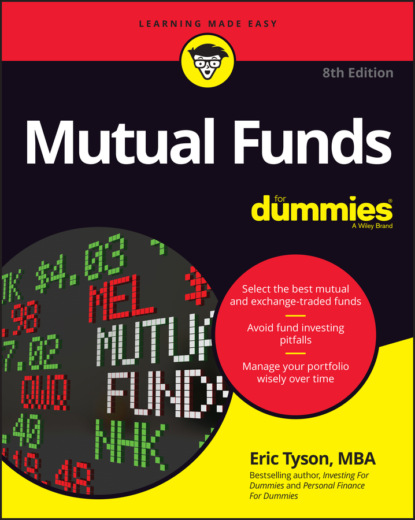in the economy and financial markets can affect the decisions you make.
If one or more of these descriptions rings true, you’re in the right place. Mutual funds are a huge business, and they can be confusing. Today, thousands of mutual funds account for more than $27 trillion under management, and exchange-traded funds hold another $7 trillion. Although the basic principle behind funds sounds simple enough — pooled money from many individuals that’s invested in stocks, bonds, or other securities — you have to understand the different types of investments, such as stocks and bonds, and the way they work.
Unfortunately, you have too many individual funds from which to choose — hundreds of fund companies, brokerage firms, insurers, banks, and so on are selling thousands of funds. Even experienced investors suffer from information overload. Luckily for you, I present short lists of great funds that meet different needs.
And because no investment, not even one of the better funds, is free of flaws and shortcomings, I explain how to easily avoid the worst funds — and the numerous mediocre ones — that clutter the investment landscape. I also help you understand when investing in funds may not be appropriate for you and what your best options may be.
Icons Used in This Book
Throughout this book, you can find friendly and useful icons that enhance your reading pleasure and flag special types of information. So when you meet one of these margin-hugging doodads, consider the following:
Beyond the Book
In addition to what you’re reading right now, this product also comes with a free access-anywhere Cheat Sheet that can help you think about the role of fund investing in your personal and financial life. To get this Cheat Sheet, simply go to www.dummies.com and search for “Mutual Funds For Dummies Cheat Sheet” in the Search box.
Where to Go from Here
You don’t need to read this book from cover to cover. But if you’re a beginner or you want to fully immerse yourself in the world of fund investing, go for it! However, you may have some specific questions today, and you’ll want some other information tomorrow. No problem there, either. Mutual Funds For Dummies, 8th Edition, is well organized and easier to use than other fund-investing books. Use the table of contents or the index to speed your way toward what you need to know and get on with your life.
Part 1
Getting Started with Funds
IN THIS PART …
Understand investment options, risks, rewards, and diversification.
Discover the pros and cons of mutual and exchange-traded funds.
Get your financial house in order before investing in funds.
Chapter 1
Making More Money, Taking Less Risk
IN THIS CHAPTER
In my years of work as a financial advisor, educator, and a columnist answering many readers’ questions, I’ve seen the same, avoidable mistakes being made over and over. Often, these investing mistakes occurred for one simple reason: a lack of investment understanding. People didn’t know what their investing options were and why particular options were inferior or superior to others.
By reading this book, you can prevent yourself from making investment mistakes. And you can take advantage of an excellent investment vehicle: mutual funds — the best of which offer you diversification, which reduces your risks, and low-cost access to highly diversified portfolios and professional money managers, who can boost your returns with less risk. Funds are a vehicle to help you achieve your financial and personal goals. Mutual funds and exchange-traded funds can fit nicely in the context of your overall financial plans and goals. This chapter gives you an investment overview so you can see how mutual funds and exchange-traded funds fit into the overall investment world.
Introducing Mutual Funds and Exchange-Traded Funds
If you already understand stocks and bonds, their risks and potential returns, and the benefits of diversification, terrific. You can skip/breeze through some of this chapter. Most people, however, don’t really comprehend investment basics, which is one of the major reasons people make investment mistakes in the first place.
After you understand the specific types of securities (stocks, bonds, and so on) that funds can invest in, you’ve mastered one of the important building blocks to understanding mutual funds and exchange-traded funds. A mutual fund is a vehicle that holds other investments: When you invest in a mutual fund, you’re contributing to a big pool of money that a mutual fund manager uses to buy other investments, such as stocks, bonds, and/or other assets that meet the fund’s investment objectives.
Exchange-traded funds (ETFs) are a very close relative of mutual funds and differ from them in one particular way. ETFs trade like stocks on a stock exchange and thus can be bought or sold during the trading day when the financial markets are open. (In Chapter 2, I explain one exception to this rule. A type of mutual fund, known as a closed-end fund, which accounts for a mere 1 percent of mutual fund assets, trades on
